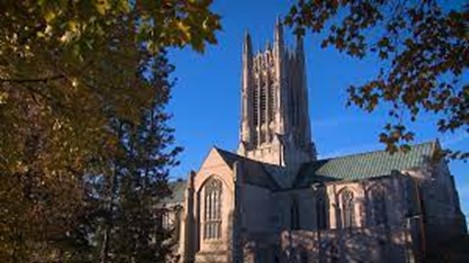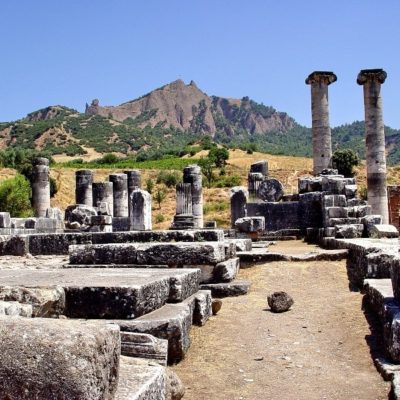Apostolic Catholic Assyrian Church of the East, North American Dioceses

Introduction
Apostolic Catholic Assyrian Church of the East North American diocese is also known as the Church of the East, Holy Apostolic Catholic Assyrian Church of the East, Nestorian Church, Persian Church, East Syrian church, Assyrian Church of the East and the Chaldean Syrian Church (in India only). It is fashioned by the Apostolic Bishops, Presbyters, and Deacons. Around the 4th century, the bishop of the Persian Empire, Papa bar Gaggai, organized the church, and called it “Catholicos of the East”. The government of the Church of the East is Episcopal. The Nicene Creed and the teachings of the Fathers of the church form their theology and worship practices.
The Apostolic Catholic Assyrian Church of the East, North American Diocese was originally centered in the northern part of Kurdistan. The Turks attacked northern Kurdistan and the church began to arrive in the United States in 1890. In 1940, the Apostolic Catholic Assyrian Church of the East, North American Diocese was formally organized in the United States when the Patriarch moved to Chicago. The international headquarters remain in Iraq. His Holiness Mar Dinkha IV, is the Catholicos-Patriarch of the Assyrian Church of the East.
History
The Apostolic Catholic Assyrian Church began in the 2nd century. It was first built by the Parthian Empire. The Parthian Empire was overthrown by the Persian Empire. The Persian Empire reached from the border of Rome to India. It is believed the place of origin for the Apostolic Catholic Assyrian Church was probably in northern Mesopotamia.
During the 3rd century the Apostolic Catholic Assyrian Church continued to grow under the Persian government. The Assyrian people of Mesopotamia are only one of the many ethnic groups belonging to the Apostolic Catholic Assyrian Church. The language of the Apostolic Catholic Assyrian Church is Syriac or Aramaic and Greek.
The Assyrian Church of the East is the apostolic church of Mesopotamia, Persia, India and the Far East. It was considered the most influential church in Asia. The main leader and unofficial head of the Assyrian Church of the East was Babai the Great. He lived from c. 551 to 628. He was born to a wealthy Persian family.
The Nestorian Schism was the split that took place between the Byzantine church of the West and the Assyrian church of the East taking place in the 5th century. This split caused the Assyrian Church of the East to separate from the other Apostolic Churches. The main issue was over the title of the Virgin Mary, whether she was to be called the mother of God verses the mother of Christ. There was also an issue of the splitting of Christ into two persons. The Assyrian Church holds to the belief of Babai the Great that Christ had two essences which are unmingled and eternally developed into one personality. Nestorianism teaches that Jesus existed as two people, the man Jesus and the divine Son of God. The Nestorian Christian doctrine holds that Jesus is not a unified person. Nestorians reject that Jesus and God are the same. They do not believe God suffered or that God was crucified. They believe that Jesus Christ suffered and was crucified. The Assyrian Church of the East is often referred to as the Nestorian Church; however, the Assyrian Church has not taught Nestorianism in any of their doctrines.
The teachings of the Apostolic Catholic Assyrian Church state the Holy Spirit was a gift to the disciples who revealed that Christ was not an ordinary man; Christ is God and man, anointed with the Godhead. The Father, Son and Holy Spirit exist in three persons.
Belief
The Theology of the Church of the East has been stated briefly and clearly in the following “Hymn of Praise (TESHBOKHTA)” Composed by Mar Babai the Great in the sixth century A.D., a noted theologian of the Church.
“Hymn of Praise (TESHBOKHTA)”
One is Christ the Son of God,
Worshiped by all in two natures;
In His Godhead begotten of the Father,
Without beginning before all time;
In His humanity born of Mary,
In the fullness of time, in a body united;
Neither His Godhead is of the nature of the mother,
Nor His humanity of the nature of the Father;
The natures are preserved in their Qnumas,
In one person of one Sonship.
And as the Godhead is three substances in one nature,
Likewise the Sonship of the Son is in two natures, one person.
So the Holy Church has taught.
The Apostolic Catholic Assyrian Church believes in the sacraments of Baptism and the Eucharist. Confirmation is provided with Baptism and Absolution is an advantage of the Eucharist. Absolution is administered during a common service. The Eucharist in the Syriac language of the Church is Qurbana Qaddisha, or the “Holy Offering”. They believe in both adult and infant baptism. Those adults coming from other Christian bodies who have been baptized in the name of the Father, Son and Holy Spirit do not have to be re-baptized. Anointing with oil is used as the final sealing of the Baptism.
The Nicene Creed, the Mystery of the Holy Trinity and the Mystery of the Incarnation are all central doctrines. The Apostolic Catholic Assyrian Church believes in the One Triune God as the Father, Son, and Holy Spirit. They believe Jesus is the only begotten Son of God, God the Word, who became incarnate for mankind for their salvation. They reject any teachings that evoke any idea that Christ is in any way an ordinary man.
The Apostolic Catholic Assyrian Church rejects any teachings suggesting there are two Sons, two Lords, or two Christ’s in our Lord and Savior Jesus Christ. They confess one Lord Jesus Christ, the Son of God, who is the same yesterday, today and forever.
Cite Article Source
MLA Style Citation:
Holstein, Joanne “Apostolic Catholic Assyrian Church of the East, North American Dioceses: .” Becker Bible Studies Library Jan 2006.<https://guidedbiblestudies.com/?p=2578,>.
APA Style Citation:
Holstein, Joanne (2006, January) “Apostolic Catholic Assyrian Church of the East, North American Dioceses:.” Becker Bible Studies Library. Retrieved from https://guidedbiblestudies.com/?p=2578,.
Chicago Style Citation:
Holstein, Joanne (2006) “Apostolic Catholic Assyrian Church of the East, North American Dioceses:.” Becker Bible Studies Library (January), https://guidedbiblestudies.com/?p=2578, (accessed).


